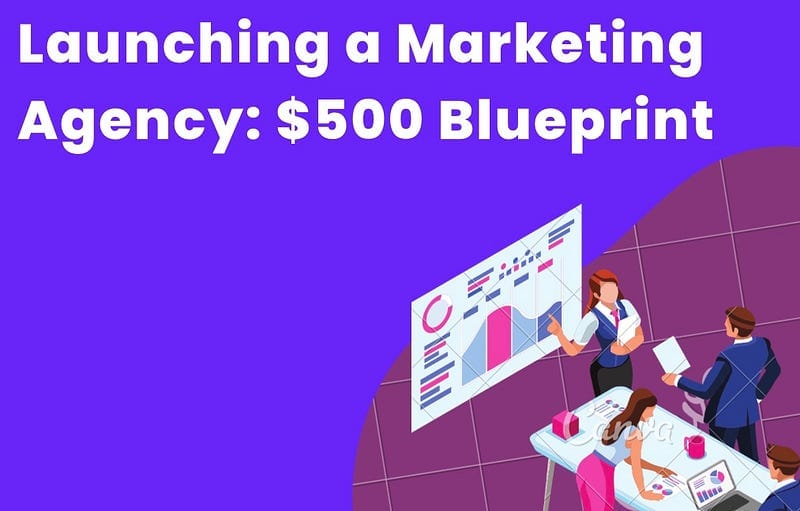A Detailed Breakdown: How to Allocate Your $500 Budget to Start a Marketing Agency
Introduction

Introduction
When starting a marketing agency with a limited budget, every dollar counts. To get the most out of your $500 investment, it’s crucial to allocate your resources strategically. This article will provide a step-by-step breakdown of how to spend your $500 wisely, ensuring your marketing agency is set up for success from the very beginning.
Step 1: Business Formation and Legal Fees ($100)
To legally establish your marketing agency, you’ll need to set aside funds for business registration, permits, and licenses. In many cases, forming a sole proprietorship or limited liability company (LLC) is the most cost-effective option. Allocate around $100 for this step, keeping in mind that costs may vary depending on your location and chosen business structure.
Step 2: Website and Domain Name ($100)
A professional online presence is essential for any marketing agency. Allocate $100 for purchasing a domain name and creating a website. You can use affordable website builders like Wix or WordPress to keep costs low. This budget should cover the domain registration fee, website hosting, and a basic website template.
Step 3: Design and Branding ($50)
Consistent branding is crucial for making your agency stand out from the competition. Dedicate $50 to designing a logo and creating a cohesive visual identity. You can use affordable design tools like Canva or hire a freelance designer on platforms like Fiverr or Upwork to create your branding materials within your budget.
Step 4: Social Media Management Tools ($50)
Staying active on social media is essential for promoting your marketing agency and connecting with potential clients. Allocate $50 for social media management tools like Buffer or Hootsuite, which offer affordable plans to help you schedule content, track performance, and manage multiple accounts.
Step 5: Email Marketing Software ($50)
Email marketing is an effective way to communicate with clients and generate leads. Set aside $50 for email marketing software like Mailchimp or SendinBlue, which offer basic plans that allow you to send professional emails, manage your contact list, and track campaign performance.
Step 6: Networking and Professional Development ($100)
Networking is crucial for finding clients and building relationships within the industry. Allocate $100 for attending local networking events, joining industry associations, or taking online courses to further your expertise. This investment in professional development will help you stay current with industry trends and connect with potential clients.
Step 7: Emergency Fund ($50)
Finally, set aside $50 as an emergency fund for unexpected expenses or opportunities that may arise during the early stages of your marketing agency. This could include additional software, equipment, or a last-minute networking event. Having a small buffer will give you peace of mind and allow you to seize new opportunities as they present themselves.
Conclusion
Starting a marketing agency on a $500 budget requires careful planning and resource allocation. By following this detailed breakdown, you can effectively distribute your funds across essential business elements, setting your marketing agency up for success from the very beginning. As your agency grows, continue to prioritize cost-effective strategies and reinvest your earnings to fuel further growth and expansion.





